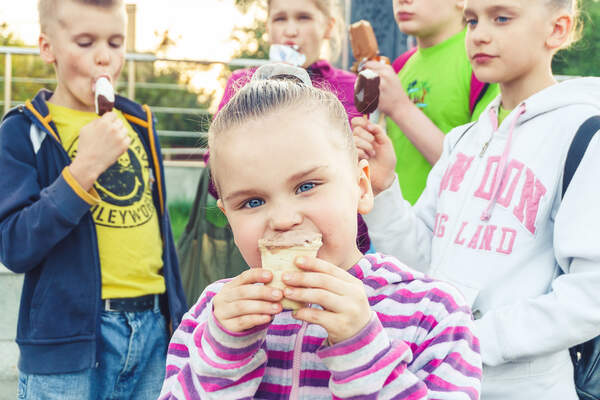The Alarming Rise of Child Obesity in America: Causes and Solutions
Child obesity is a rapidly growing problem in the United States. According to the Centers for Disease Prevention and Control (CDC), obesity affected 14.7 million children and adolescents between 2017-20. The percentage of children and adolescents with a body mass index (BMI) in the obese range has more than tripled since 1980.
Furthermore, the number of children with severe obesity has increased sixfold. A 5th to 84th percentile BMI range is considered healthy for children. But many children are over this range.
It’s clear that many factors contribute to this increase, but we don’t yet know exactly what causes childhood obesity or how best to address it. This blog post will explore some of these causes and solutions so you can help prevent your child from becoming one of the millions who struggle with this condition every year.
Harmful Effects of Child Obesity in America
The problem of childhood obesity in America is growing at an alarming rate. Obesity is a major risk factor for heart disease, stroke, type 2 diabetes, and certain cancers. It also puts children at risk for poor self-esteem due to the social stigma surrounding their weight or appearance.
Prevention and Support
Early intervention is crucial to help solve childhood obesity in America. Educate children about healthy eating and how it benefits their bodies.
For support, seek out social work programs designed help bring down obesity among children. A reliable source to get information online is from University websites. University of Nevada, Reno, has a ton of information on obesity and how early intervention can help. It also lets any student holding a Bachelor’s degree in either social or non-social work get a Master’s degree in social work. This can motivate people to perform social activities to help reduce childhood obesity in America.
Harmful Effects of Child Obesity in America

Rapid Change in Eating Patterns
The rise in obesity can be attributed to several factors. First, we’re busier than ever. Between work and family commitments, it’s easy to find yourself eating on the go including resorting picking up fast food.
At home, people are eating more processed foods than ever because they’re cheap and convenient. Processed foods have high calories that can lead to obesity. According to a recent study published in the JAMA Network publication, 67 percent of a child’s calories come from ultra-processed foods in the US.
Lack of Exercise
While it’s easy to see the link between a sedentary lifestyle and weight gain, physically active children typically have better health outcomes than their more inactive peers.
Physical activity is essential for maintaining a healthy weight, building strong bones and muscles, improving mood and self-esteem, reducing stress levels, and keeping you awake during class.
Increasing Screen Time
Parents are well aware that an excess of TV and computer time can harm a child’s wellbeing and health. Limiting their exposure and encouraging them to be active instead is vital.
- Children who watch more than two hours of television per day are twice as likely to be overweight or obese than those watching less than one hour daily. A study from the American Academy of Pediatrics shows that 42 percent of children are at risk due to this trend.
- Studies have shown that children who spend more time watching television are less likely to eat fruits, vegetables, and whole grains, and this has been linked with childhood obesity in multiple studies over the years.
Family Environment
Family environment is a significant factor in childhood obesity. A supportive family can help your child maintain a healthy weight and prevent unhealthy eating habits, while the opposite can negatively affect their health.
Family support is one of the most critical factors in helping children maintain healthy weights. In fact, research shows that young people with active parents are more likely to be physically active than those without active parents. This suggests that if you want your child to be active, then it’s vital for you as their parent or guardian to model this behavior.
In addition to being physically active together as a family, eating meals together regularly and encouraging healthy eating choices at home can also play an essential role in controlling kids’ weights throughout childhood into adulthood.
Genetics
Genetics is one of the main causes of child obesity. A child’s genetic predisposition, family history, and genetic testing can be factored into their weight gain.
Genetic testing can determine if specific mutations in your genes make it easier for you to gain weight or if there are other genetic conditions, such as Prader-Willi syndrome or Bardet-Biedl syndrome.
Teaching kids about how genetics influence their weight can remove a lot of the shame associated with their size. Today, doctors stress that obesity is a disease more than it is a person’s own fault.
Genetic counseling is also important when considering having children because it helps parents understand how their genetics will affect their children’s health and development. Genetic counseling may include discussions about:
- Reproductive options such as prenatal screening tests
- Preimplantation genetic diagnosis (PGD)
- Amniocentesis
- Chorionic villus sampling (CVS)
Solutions for Addressing Child Obesity in America
We’ve already mentioned how important early intervention is, but it’s never too late to make changes and seek help when necessary. Here are a few solutions you can implement to face the problem of obesity in your family head on.
Lifestyle Changes
The following are some simple steps you can take to ensure that your child is eating a healthy diet:
- Eat more fruits and vegetables.
- Eat less processed foods.
- Eat less sugar, salty foods and saturated fats, and less trans fats. These foods may be tempting because they’re easy to eat on the go and taste good immediately after consumption.
Here’s how it works. When children consume too many calories from these “empty” sources through their diets, those excess calories get stored inside fat cells around their bellies, causing them to look bloated and feel bloated.
Education and Awareness
The more we can teach people about the causes of childhood obesity, the more they will be able to understand how it affects their children’s health. If you know someone struggling with their weight or has a child who struggles with theirs, share this article with them.
Introduce kids to healthy and delicious food habits from other cultures. There are plenty of examples of how people from other countries remain healthy and lean while enjoying plant based proteins and better choices of non-processed meats. In many cultures, taste is equally important as nutrition. No one wants to eat bland food.
Community-Based Interventions
Community-based interventions can be effective in addressing childhood obesity in America. Community-based interventions can target specific populations, such as children or adults of certain races, ethnicities, socioeconomic statuses, and educational backgrounds.
They are also implemented in schools, healthcare settings, and community centers that serve various clients from different backgrounds. Community-based interventions are often used to address other health issues besides obesity, such as smoking cessation programs.
The CDC recommends communities create local school wellness policies and encourage educational institutions to follow them. It also ensures that the food available for students at school is healthy and meets all dietary requirements.
Conclusion
The rise in child obesity in America is a serious issue that needs to be addressed. The consequences of this epidemic are staggering, affecting not only the individual children who are impacted but also our nation as a whole. We hope that by providing information about what causes obesity in children and how we can address it, we will help raise awareness about this problem.





